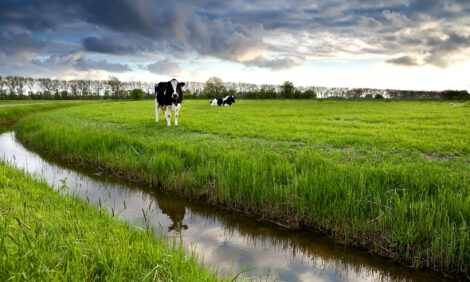



Farmers Short of Fodder for Winter Months
IRELAND - Thirty eight per cent of dairy farmers and 15 per cent of drystock farmers say they are short of silage for next winter. A fodder survey carried out by Teagasc advisers of farmers in discussion groups shows that the deficit in silage stocks on farms for next winter ranges from 10 per cent to 40 per cent.he average deficit is 23 per cent. To compound the situation, over half of farmers are feeding silage to livestock at present, further eating into stocks. On farms where there are adequate silage stocks, the quality of the silage will have major implications for supplementary feed costs and animal performance next winter.
Carried out from the 17th to 27th July, the Teagasc survey shows that 87 per cent of dairy farmers and 79 per cent of drystock farmers had completed the harvesting of their first cut of silage. Normally at this time of the year, farmers would all have completed harvesting their first cut silage.
Due to the ongoing bad weather huge numbers of farmers are seeking advice on how to deal with the situation. Teagasc has run a series of clinics for farmers over the past month. These will continue while farmers need advice on how to manage the difficult weather conditions.
Teagasc animal nutrition specialist Dr Siobhan Kavanagh said: "Every farm is different and some farms are under more pressure than others. Teagasc is offering farmers individual tailor made advice on how to cope with the situation on their farm."
The Teagasc survey shows that farmers are taking a range of measures to address the situation. Nine out of ten dairy farmers are currently providing supplementary meal to their dairy cows. Thirty per cent of dairy farmers surveyed and 17 per cent of drystock farmers said they sold livestock to alleviate fodder problems. Eight out of ten dairy farmers and over half of drystock farmers have spread fertiliser in July to boost grass production. Sixty three per cent of farmers say that grass supplies on their farms are either scarce or very scarce, with ground conditions being poor in many areas, even where grass supplies are adequate.


